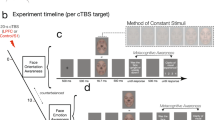Abstract
Awareness can be measured by investigating the patterns of associations between discrimination performance (first-order decisions) and confidence judgments (knowledge). In a typical post-decision wagering (PDW) task, participants judge their performance by wagering on each decision made in a detection task. If participants are aware, they wager advantageously by betting high whenever decisions are correct and low for incorrect decisions. Thus, PDW—like other awareness measures with confidence ratings—quantifies if the knowledge upon which they make their decisions is conscious. The present study proposes a new method of assessing the association between advantageous wagering and awareness in the PDW task with a combination of log-linear (LLM) modeling and neural network simulation to reveal the computational patterns that establish this association. We applied the post-decision wagering measure to a backward masking experiment in which participants made first-order decisions about whether or not a masked emotional face was present, and then used imaginary or real monetary stakes to judge the correctness of their initial decisions. The LLM analysis was then used to examine whether advantageous wagering was aware by testing a hypothesis of partial associations between metacognitive judgments and accuracy of first-order decisions. The LLM outcomes were submitted into a feed-forward neural network. The network served as a general approximator that was trained to learn relationships between input wagers and the output of the corresponding log-linear function. The simulation resulted in a simple network architecture that successfully accounted for wagering behavior. This was a feed-forward network unit consisting of one hidden neuron layer with four inputs and one output. In addition, the study indicated no effect of the monetary incentive cues on wagering strategies, although we observed that only low-wager input weights of the neural network considerably contributed to advantageous wagering.




Similar content being viewed by others
References
Agresti A. An introduction to categorical data analysis (Vol. 423). Wiley-Blackwell. 2007.
Anderson G, Brown RIF. Real and laboratory gambling, sensation-seeking and arousal. Br J Psychol. 1984;75(3):401–10.
Beale, M. H., Hagan, M. T., & Demuth, H. B. (2015). Neural Network Toolbox™ getting started guide.
Cleeremans A. Consciousness: the radical plasticity thesis. Prog Brain Res. 2008;168:19–33.
Cleeremans A, Haynes JD. Correlating consciousness: a view from empirical science. Rev Int Philos. 1999:387–420.
Cleeremans A, Timmermans B, Pasquali A. Consciousness and metarepresentation: a computational sketch. Neural Networks: the official journal of the International Neural Network Society. 2007;20(9):1032–9. doi:10.1016/j.neunet.2007.09.01.
Clifford CW, Arabzadeh E, Harris JA. Getting technical about awareness. Trends Cogn Sci. 2008;12(2):54–8. doi:10.1016/j.tics.2007.11.00.
Dailey MN, Cottrell GW, Padgett C, Adolphs R. EMPATH: a neural network that categorizes facial expressions. J Cogn Neurosci. 2002;14(8):1158–73.
Dehaene S, Changeux JP. Experimental and theoretical approaches to conscious processing. Neuron. 2011;70(2):200–27.
Dienes Z, Perner J. Assumptions of a subjective measure of consciousness: three mappings. In: Gennaro R, editor. Higher order theories of consciousness. Amsterdam: John Benjamins Publishers; 2004. p. 173–99.
Dienes Z, Seth A. Gambling on the unconscious: a comparison of wagering and confidence ratings as measures of awareness in an artificial grammar task. Conscious Cogn. 2010;19(2):674–81.
Ekman P, Friesen WV. Pictures of facial affect. Palo Alto, CA: Consulting Psychologists Press; 1976.
Fleming SM, Dolan RJ. Effects of loss aversion on post-decision wagering: implications for measures of awareness. Conscious Cogn. 2010;19(1):352–63.
Fleming SM, Weil RS, Nagy Z, Dolan RJ, Rees G. Relating introspective accuracy to individual differences in brain structure. Science (New York, NY). 2010;329(5998):1541–3.
Hentschke H, Stüttgen MC. Computation of measures of effect size for neuroscience data sets. Eur J Neurosci. 2011;34(12):1887–94.
Ishai A, Pessoa L, Bikle PC, Ungerleider LG. Repetition suppression of faces is modulated by emotion. Proc Natl Acad Sci U S A. 2004;101:9827–32.
Lisetti C L, Rumelhart DE. Facial expression recognition using a neural network. In FLAIRS Conference; 1998. 328–332.
Lundqvist D, Öhman A. Emotion regulates attention: the relation between facial configurations, facial emotion, and visual attention. Vis Cogn. 2005;12(1):51–84.
Lundqvist D, Flykt A, Öhman A. The Karolinska Directed Emotional Faces (KDEF). CD ROM from Department of Clinical Neurosci Psychol Sec Karolinska Inst; 1998. 91–630
Maniscalco B, Lau H. A signal detection theoretic approach for estimating metacognitive sensitivity from confidence ratings. Conscious Cogn. 2012;21(1):422–30. doi:10.1016/j.concog.2011.09.021.
Maniscalco B, Lau H. Signal detection theory analysis of type 1 and type 2 data: meta-d’, response-specific meta-d’, and the unequal variance SDT mode. In S. M. Fleming & C. D. Frith (Eds.), The Cognitive Neuroscience of Metacognition; 2014. 25–66. Springer.
Mermillod M, Vermeulen N, Lundqvist D, Niedenthal PM. Neural computation as a tool to differentiate perceptual from emotional processes: the case of anger superiority effect. Cognition. 2009;110(3):346–57.
Öhman A. The role of the amygdala in human fear: automatic detection of threat. Psychoneurendocrinology. 2005;30:952–8.
Pasquali A, Timmermans B, Cleeremans A. Know thyself: metacognitive networks and measures of consciousness. Cognition. 2010;117(2):182–90. doi:10.1016/j.cognition.2010.08.01.
Peters MA, Lau H. Human observers have optimal introspective access to perceptual processes even for visually masked stimuli. ELife; 2015. 4. doi:10.7554/eLife.0965
Persaud N, McLeod P, Cowey A. Post-decision wagering objectively measures awareness. Nat Neurosci. 2007;10(2):257–61.
Pessoa L. To what extent are emotional visual stimuli processed without attention and awareness? Curr Opin Neurobiol. 2005;15(2):188–96.
Ruffman T, Garnham W, Import A, Connolly D. Does eye gaze indicate implicit knowledge of false belief? Charting transitions in knowledge. J Exp Child Psychol. 2001;80(3):201–24. doi:10.1006/jecp.2001.263.
Sandberg K, Bibby BM, Timmermans B, Cleeremans A, Overgaard M. Measuring consciousness: task accuracy and awareness as sigmoid functions of stimulus duration. Conscious Cogn. 2011;20(4):1659–75. doi:10.1016/j.concog.2011.09.002.
Sato YD, Nagatomi T, Horio K, Miyamoto H. The cognitive mechanisms of multi-scale perception for the recognition of extremely similar faces. Cogn Comput. 2015;7(5):501–8.
Schürger A, Sher S. Awareness, loss aversion, and post-decision wagering. Trends Cogn Sci. 2008;12(6):209–10. doi:10.1016/j.tics.2008.02.01.
Sun R, Wilson N, Lynch M. Emotion: a unified mechanistic interpretation from a cognitive architecture. Cogn Comput. 2016;8(1):1–14.
Szczepanowski R. Absence of advantageous wagering does not mean that awareness is fully abolished. Conscious Cogn. 2010;19(1):426–31.
Szczepanowski R, Pessoa L. Fear perception: can objective and subjective awareness measures be dissociated? J Vis. 2007;7(4):1–17.
Szczepanowski R, Traczyk J, Wierzchoń M, Cleeremans A. The perception of visual emotion: comparing different measures of awareness. Conscious Cogn. 2013;22(1):212–20. doi:10.1016/j.concog.2012.12.00.
Timmermans B, Schilbach L, Pasquali A, Cleeremans A. Higher order thoughts in action: consciousness as an unconscious re-description process. Philosophical Transactions of the Royal Society of London. Series B, Biological Sciences. 2012;367(1594):1412–23. doi:10.1098/rstb.2011.042.
Wierzchoń M, Asanowicz D, Paulewicz B, Cleeremans A. Subjective measures of consciousness in artificial grammar learning task. Conscious Cogn. 2012;21(3):1141–53. doi:10.1016/j.concog.2012.05.01.
Wierzchoń M, Wronka E, Paulewicz B, Szczepanowski R. Post-decision wagering affects metacognitive awareness of emotional stimuli: an event related potential study. PLoS One. 2016;11(8):e0159516. doi:10.1371/journal.pone.015951.
Zotto MD, Pegna AJ. Processing of masked and unmasked emotional faces under different attentional conditions: an electrophysiological investigation. Front Psychol. 2015;6:1691. doi:10.3389/fpsyg.2015.0169.
Acknowledgements
This work was supported by the National Science Center under grants’ decision DEC-2011/03/B/HS6/01799 to R.S. We thank Tomasz Guszkowski for designing neural computation.
Author information
Authors and Affiliations
Corresponding author
Ethics declarations
Funding
This study was funded by the National Science Center (grant number 2011/03/B/HS6/01799).
Conflict of Interest
The authors declare that they have no conflict of interest.
Ethical Approval
All procedures performed in studies involving human participants were in accordance with the ethical standards of the institutional and/or national research committee and with the 1964 Helsinki declaration and its later amendments or comparable ethical standards.
Informed Consent
Informed consent was obtained from all individual participants included in the study.
Rights and permissions
About this article
Cite this article
Szczepanowski, R., Wierzchoń, M. & Szulżycki, M. Neuronal Network and Awareness Measures of Post-Decision Wagering Behavior in Detecting Masked Emotional Faces. Cogn Comput 9, 457–467 (2017). https://doi.org/10.1007/s12559-017-9456-6
Received:
Accepted:
Published:
Issue Date:
DOI: https://doi.org/10.1007/s12559-017-9456-6




